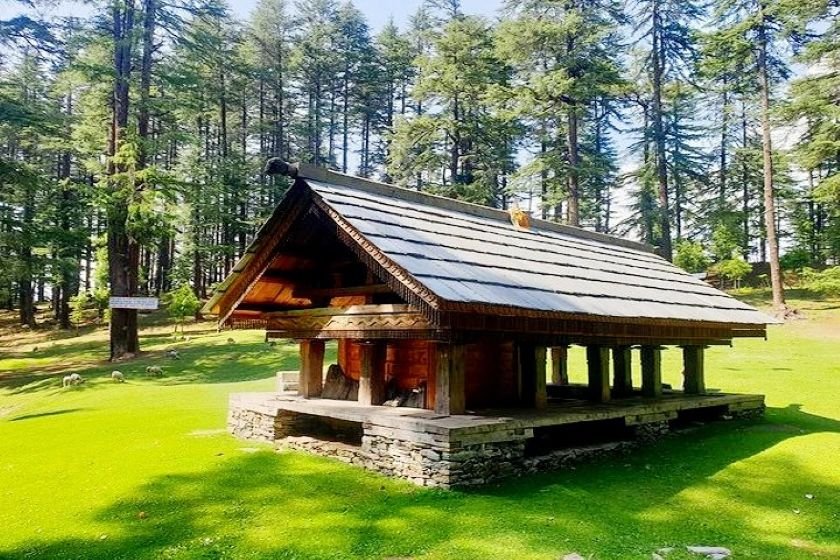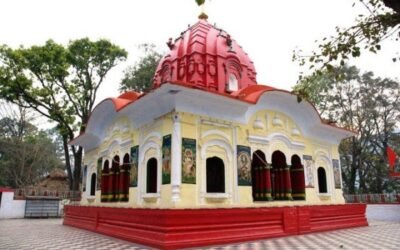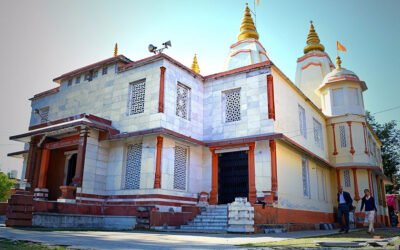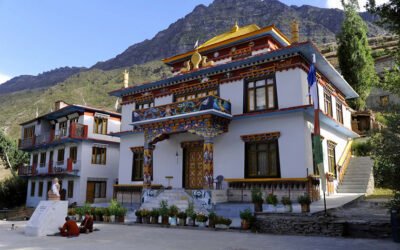Where pine shadows guard a thousand-year-old whisper of healing and devotion
Hidden in the emerald folds of Bahu village, just above the misty trails of Jibhi, the Balu Nag Temple is a serpent deity shrine steeped in myth, nature, and quiet reverence. Surrounded by towering deodars and alpine meadows, this ancient temple is dedicated to Balu Nag Devta, a revered local incarnation of the serpent god (Nāga), protector of the land and bringer of rain, fertility, and justice.
🌄 Location & Accessibility
- Location: Bahu village, ~10 km from Jibhi, Banjar Tehsil, Kullu District, Himachal Pradesh – 175123
- Altitude: ~2,300 meters
- By Road: Drive from Jibhi to Bahu (~30 minutes); road is narrow but motorable
- Trek: ~30–45 minute uphill walk from Bahu village through pine forests and terraced fields
- By Air: Bhuntar Airport (~60 km)
- By Rail: Joginder Nagar (~160 km) or Pathankot (~300 km)
🕉️ Deity & Worship
The temple is dedicated to Balu Nag, a powerful Nāga Devta believed to reside in the surrounding forests and springs. He is worshipped as a guardian of the village, a healer, and a bringer of rain and fertility. Locals believe that Balu Nag protects the region from natural calamities and responds swiftly to injustice.
The goddess is worshipped in the form of three pindis, representing Maha Kali, Maha Lakshmi, and Maha Saraswati.
Devotees offer red flags, coconuts, and sweets, and the temple is especially known for fulfilling wishes of childless couples and those seeking justice. Rituals include offering spring water, incense, and seasonal flowers, and during festivals, the deity is invoked through traditional music, dance, and oracles (gurs).
🏛️ Architecture & Setting
The Balu Nag Temple is a modest wooden shrine built in traditional Kath-Kuni style, with stone foundations, cedar walls, and a sloped slate roof. It sits in the center of a lush green meadow, surrounded by dense pine and deodar forests, with snow-capped peaks peeking through the canopy.
A sacred pond (kund) near the temple is believed to have healing properties, and pilgrims often bathe or sprinkle its water before offering prayers. The silence of the forest, broken only by birdsong and temple bells, creates a deeply meditative atmosphere.
📜 Mythological Significance
According to local legend, Balu Nag was one of the ancestral serpent deities who settled in the region to protect its people and forests. It is said that the temple stone was chosen by the deity himself, and the site has been sacred for over a thousand years.
The temple is part of the Nāga Devta tradition of Himachal, where serpent gods are revered as guardians of water, fertility, and justice. During times of drought or unrest, villagers gather here to invoke the deity’s guidance and blessings.
🎉 Festivals & Celebrations
- Balu Nag Mela (Spring/Summer): A vibrant local fair with devta processions, folk music, and community feasts
- Sankranti & Navratri: Special pujas and offerings to the goddess and Nāga Devta
- Daily Worship: Includes lighting of ghee lamps, offering of milk and flowers, and chanting of local hymns
🏞️ Nearby Attractions
- Jibhi Waterfall & Forest Trails: A short drive and walk from Bahu
- Chehni Kothi: A historic tower temple dedicated to Shringa Rishi
- Shringa Rishi Temple, Baggi: One of the eighteen primary deities of Kullu
- Great Himalayan National Park: A UNESCO World Heritage Site nearby
🙏 Spiritual Experience
The Balu Nag Temple is not just a shrine—it is a living spirit of the forest, a place where myth breathes through pine needles and faith flows with spring water. As you sit in its meadow, with the wind rustling through cedar leaves and the mountains watching in silence, you feel the presence of a guardian older than time—a serpent sage who listens, heals, and protects.




